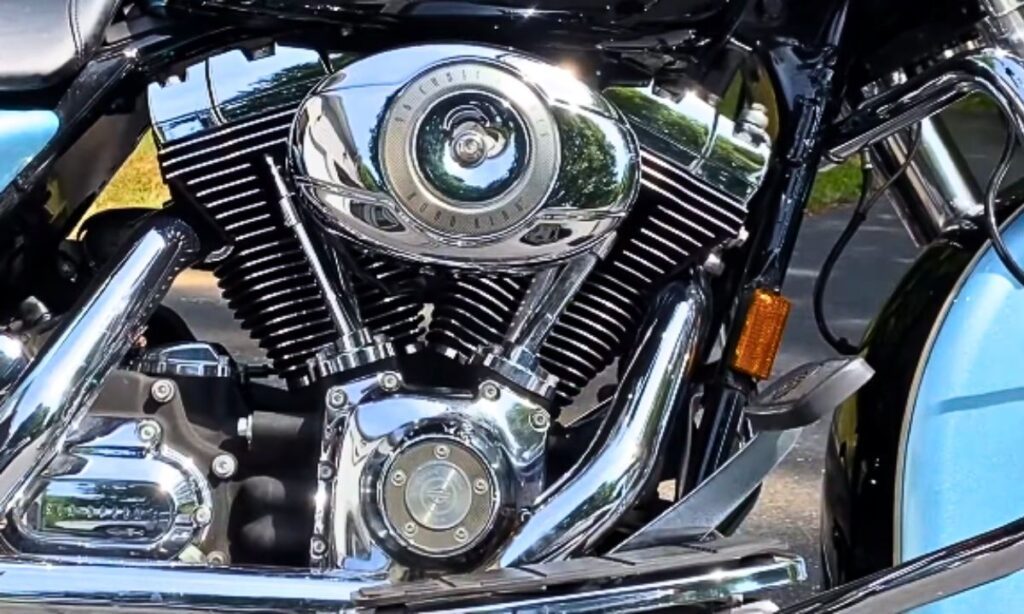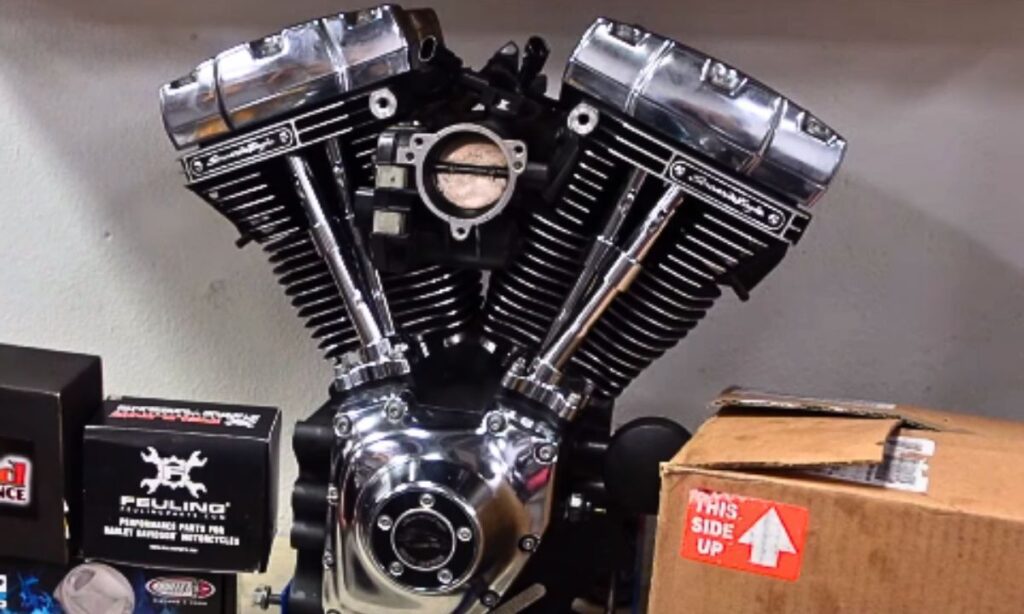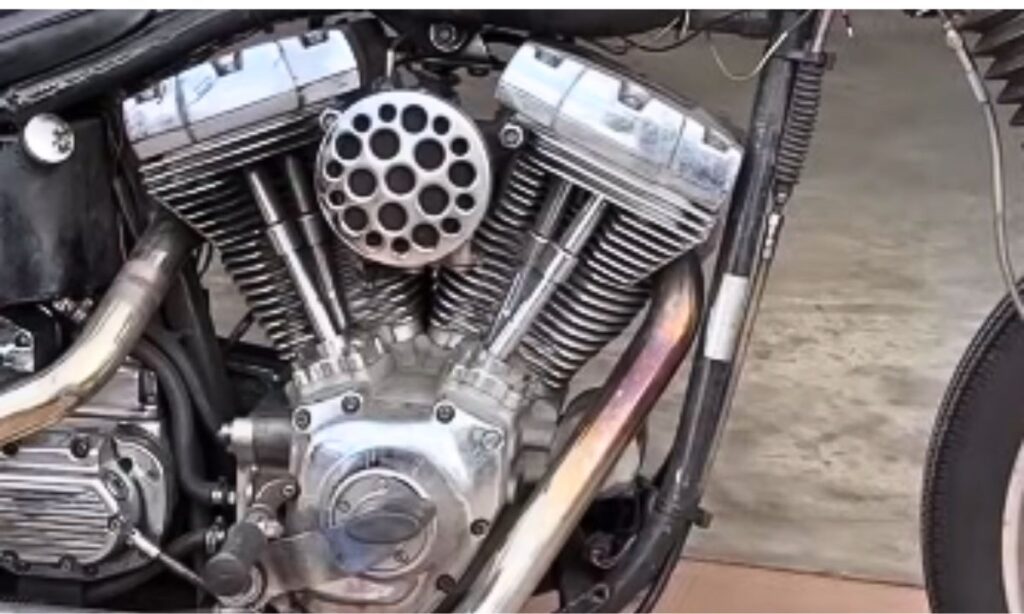Harley Davidson motorcycles are known for their robust engines and exhilarating performance.
However, like any mechanical device, they’re not immune to issues. Over time, many riders had reported about the various issues with Harley 96.
In this article, we will dive into these issues, which are reported over time with solutions.
Harley Davidson 96 Engine Problems
Some riders have reported problems related to oil consumption, excessive heat production, and cam bearing failure.
If these problems are not addressed promptly, it can lead to a reduced lifespan of the engine and even compromise your safety.

1. Oil Pump Failure
An effective and efficient oil pump is crucial for maintaining the engine’s performance and longevity, as it ensures proper oil circulation to cool and lubricate the engine’s moving parts.
The most common symptom of oil pump failure is a sudden rise in engine temperature.
This situation occurs due to inadequate oil circulation, creating excessive heat build-up, potentially leading to severe engine damage.
Another warning sign of a failing oil pump could also be the presence of unusual noises, such as a ticking or clattering sound from the engine.
This is the result of insufficient lubrication, causing metal-on-metal contact in the engine components.
The key to preventing oil pump failure is regular maintenance. Regular oil changes using the correct grade and type of oil are essential.
Regular inspection of the oil pump for any signs of wear or damage and prompt replacement of a faulty pump can prevent severe engine damage.
2. Cam Chain Tensioner Failure
The cam chain tensioner is a critical component that maintains proper tension in the cam chain. It ensures smooth and accurate timing of the opening and closing of the engine’s valves.
Failure of this component can occur due to wear and tear over time, resulting in the loosening of the cam chain.
This can lead to suboptimal performance, with symptoms such as a rattling noise from the engine, power loss, decreased fuel efficiency, and, in extreme cases, catastrophic engine damage if the chain jumps a tooth on the cam gear.
The issue can be confirmed by removing the cam cover and visually inspecting the tensioner.
Excessive wear and tear, or a tensioner that is no longer exerting the necessary pressure on the chain, indicates a failure.
To rectify this problem, it is advisable to replace the faulty tensioner. You can purchase an upgraded cam chain tensioner designed to withstand more pressure and last longer.
3. Gasket Leaks
This problem can lead to a significant decrease in the engine’s performance and, if left unattended, may result in serious engine damage.
Usually, gasket leaks are identifiable by an oil leak from the engine or, in severe cases, through white smoke from the exhaust.
A gasket functions as a seal between two parts of the engine, preventing fluids from leaking.
Over time, due to heat and pressure, this seal can become compromised, resulting in a leak.
To resolve this issue, you should first identify the source of the leak. This can be done by inspecting the engine for oil trails.
Once the compromised gasket is located, the next step would be to replace it.
The process of replacing a gasket includes draining the oil, removing the necessary parts to access the faulty gasket, replacing it with a new one, and reassembling the engine.
4. Overheating
The Harley 96, while known for its raw power and distinctive roar, has been reported to have overheating issues.
This can be particularly noticeable during longer rides or when operating in hot weather. Several factors can contribute to this:
I. Air Cooling System
Unlike modern liquid-cooled engines, the Harley Davidson 96 engine relies on an air-cooling system, which is less efficient in dissipating heat, especially during stationary or slow-moving conditions.
II. Engine Design
The V-twin design, while iconic, places the rear cylinder directly behind the front, reducing the cooling efficiency of the rear cylinder.
III. Engine Oil
Using lower-quality engine oils can accelerate overheating. High-quality synthetic oils offer better heat resistance and should be considered for these engines.
Overheating can lead to engine damage over time, so it’s important to keep an eye out for signs such as a decrease in engine performance, an increase in engine noise, or the smell of burning oil.
5. RPMs Increase
One of the recurring issues reported with the Harley 96 is an unexpected increase in RPMs, sometimes causing the engine to rev higher than considered normal.
This issue is often a symptom of underlying mechanical complications that require immediate attention.
You can address this problem by checking for any obvious signs of damage or wear in the engine components.
A malfunctioning throttle can often be the culprit behind unexpected RPM surges.
Check the throttle body, linkage, and sensor for any signs of damage or wear, and replace these components if necessary.
You should also ensure that the air filters are clean and replace them if necessary.
Dirty or clogged air filters can cause the engine to work harder than necessary, resulting in an unexpected RPM increase.
6. Clutch Problem
Users often report that the clutch does not engage or disengage properly, leading to difficulties in gear shifting and overall performance issues.
This problem typically can be due to wear and tear of the clutch plates or improper adjustment of the clutch cable.
To fix the issue, begin by checking the clutch adjustment. Harley Davidson recommends adjusting the clutch after every 5,000 miles or as needed.
If the clutch adjustment is fine, the problem may be with the clutch plates. They can wear down over time or due to aggressive riding.
Inspect them for any signs of wear, warping, or damage. If any of these conditions are found, it is advisable to replace the plates.
The clutch basket can also develop notches over time. These notches can prevent the clutch plates from sliding freely, leading to a sticky clutch.
7. Starter Problems
The problem typically originates from the starter motor failing to engage the engine’s ring gear.
The starter motor consists of a motor, a solenoid switch, and a drive gear. When you attempt to start the bike, the solenoid receives a current from the battery, causing the starter motor to spin.
The spinning action of the motor drives the gear, which engages the ring gear of the engine, causing it to start.
However, if you hear a clicking noise when trying to start, it is likely that the solenoid is not receiving enough current from the battery and the drive gear is unable to engage the ring gear.
This can be due to a weak battery, corroded cables, or a faulty solenoid.
To resolve this issue, start by checking the battery’s charge with a multimeter and replace it if it’s weak.
Next, verify that the cables connecting the battery to the solenoid are free of rust or corrosion and replace them if necessary.
If the problem persists, consider replacing the solenoid or the entire starter motor.

Tonmoy, the brains behind the influential motorcycle-focused website, TwoWheller.com, is a dedicated and passionate advocate for biking culture. Born and raised in a family of motorcycle enthusiasts, his love for two-wheeled transportation was ignited at an early age. His commitment to providing in-depth reviews and helpful tips for riders has established him as a respected figure in the motorcycle community.

